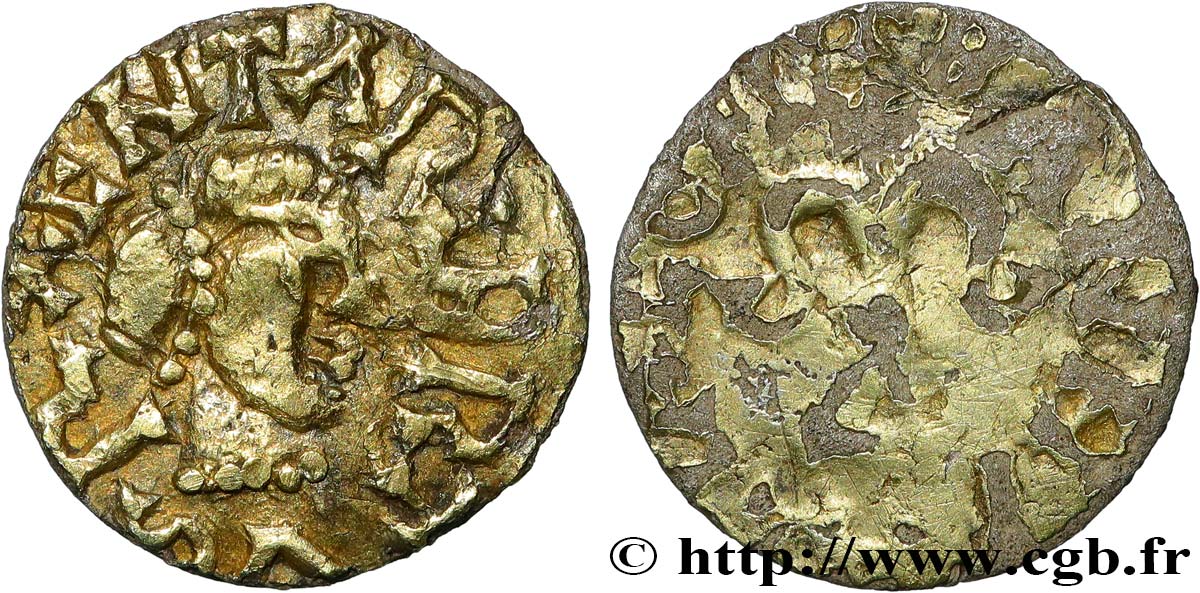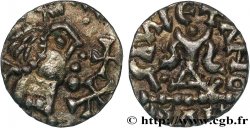bmv_929554 - MEROVINGIAN COINAGE - BANASSAC (BANNACIACO) - Lozere Triens au nom de CARIBERT II, faux d’époque
Not available.
Item sold on our e-shop (2024)
Price : 880.00 €
Item sold on our e-shop (2024)
Price : 880.00 €
Type : Triens au nom de CARIBERT II, faux d’époque
Date: c. 629-632
Date: s.m.
Mint name / Town : Banassac (48)
Metal : gold
Diameter : 12,5 mm
Orientation dies : 9 h.
Weight : 0,95 g.
Rarity : R3
Coments on the condition:
Triens frappé sur un flan assez large et irrégulier. La dorure a disparu au revers. Exemplaire fourré
Catalogue references :
Obverse
Obverse legend : + ENTARIBRTVS R.
Obverse description : Tête diadémée à droite, diadème et cou perlé.
Obverse translation : (Caribert, roi).
Reverse
Reverse legend : [...].
Reverse description : Calice à deux anses, surmonté d’une croisette.
Commentary
Faux d’époque en argent doré.








 Report a mistake
Report a mistake Print the page
Print the page Share my selection
Share my selection Ask a question
Ask a question Consign / sell
Consign / sell
 Full data
Full data







